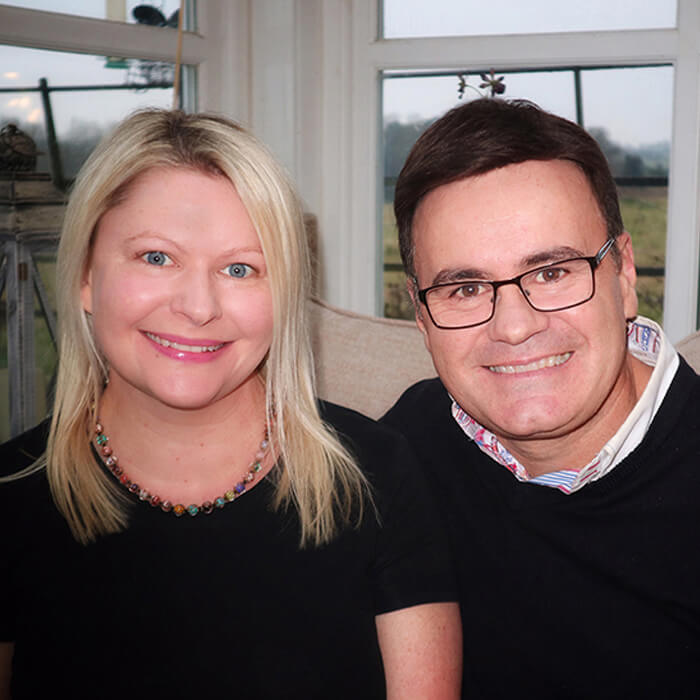
by Sarah Blinco | Dec 10, 2013 | Travel blogger destinations
Why’s the media got to be so mean?
I love media, more than most – it’s my life! But, I’ve never understood the obsession with doing anything to get the story or choosing to report the negative rather than the positive. Spend any time in the UK and you’ll see this is particularly prevalent – the meaner the headline, the more negative or nasty the story, the better. It’s certainly not much different anywhere else in the world. But why? Is it really human nature to want to bring people down this much? Some would argue yes, that’s what sells papers, therefore that’s why journalists are taught and encouraged to angle a story this way.
Why does media focus on the negative?
 Case in point, I was lucky enough to attend Taylor Swift’s sensational show at Suncorp Stadium in Brisbane on Saturday night, with 40,000 other revellers. She was just gorgeous, and the production excellent. I understand why this young artist is selling out stadiums around the world. If you can look up to someone who is younger than you, then I definitely look up to her. She’s nice, confident without being arrogant, and she writes beautiful music. It was also lovely to see that talent which is non-offensive, naked and twerking its way around the world is appreciated on a great scale by an audience of all ages. For a moment in the show, there was a bit of a malfunction, which did impact on a few attendees at the front. The majority of the massive crowd had no idea, and as the crew fixed up what turned out to be a damaged elevated stage, Taylor came out and amused the crowd for a few moments. Anyone severely put out evidently had their money refunded. In any case, these things happen, and it was rectified swiftly (pun intended) and efficiently. However, next evening on the news, channel 9 in Australia didn’t report on the wonderful show, or the excited crowd, or the brilliant performer behind it all – instead they produced a full segment on the “dramatic chaos” that unfolded, and even went to the bother of tracking down one of the very few audience members who needed to be moved. Why would they choose for this to be the focus of the story when in reality, thousands of people gained so much enjoyment from the evening? A song Taylor sang during the Red concert was Mean from her last album, and I have to say, I reckon it’s applicable to this news piece. The reason I’m blogging about it is because I noticed other attendees saw this TV news piece and commented on social media, agreeing with my own sentiments recorded here.
Case in point, I was lucky enough to attend Taylor Swift’s sensational show at Suncorp Stadium in Brisbane on Saturday night, with 40,000 other revellers. She was just gorgeous, and the production excellent. I understand why this young artist is selling out stadiums around the world. If you can look up to someone who is younger than you, then I definitely look up to her. She’s nice, confident without being arrogant, and she writes beautiful music. It was also lovely to see that talent which is non-offensive, naked and twerking its way around the world is appreciated on a great scale by an audience of all ages. For a moment in the show, there was a bit of a malfunction, which did impact on a few attendees at the front. The majority of the massive crowd had no idea, and as the crew fixed up what turned out to be a damaged elevated stage, Taylor came out and amused the crowd for a few moments. Anyone severely put out evidently had their money refunded. In any case, these things happen, and it was rectified swiftly (pun intended) and efficiently. However, next evening on the news, channel 9 in Australia didn’t report on the wonderful show, or the excited crowd, or the brilliant performer behind it all – instead they produced a full segment on the “dramatic chaos” that unfolded, and even went to the bother of tracking down one of the very few audience members who needed to be moved. Why would they choose for this to be the focus of the story when in reality, thousands of people gained so much enjoyment from the evening? A song Taylor sang during the Red concert was Mean from her last album, and I have to say, I reckon it’s applicable to this news piece. The reason I’m blogging about it is because I noticed other attendees saw this TV news piece and commented on social media, agreeing with my own sentiments recorded here.
This is one timely example relevant to my world, but it happens by the minute across all news outlets. Why does media focus on the negative? I would like to suggest though, that there is a vast audience who isn’t interested in this negative angle anymore, and I think this point is proven by the popularity blogs, websites, and magazines like Psychologies or Mind Food which present positive, useful, informative and helpful features and news. Perhaps it is also proven by the falling sales of newspapers and declining TV news ratings? We don’t all want to hear about the “chaos”, “dramatic event” or “disaster” that probably didn’t even happen in the first place. And if you’re going to report it, perhaps this doesn’t need to be 100% of the story – maybe, just maybe, you could report on one aspect that an audience would smile at or be happy about. If nothing else, it would help change the world’s mindset that generally the daily news is bad or depressing, as (within reason, obviously) I don’t believe it is or has to be.
What are your thoughts? Why does media focus on the negative? Do you enjoy that aspect, or could you do without it within every news story (particularly those where this needn’t be the angle)? Join the conversation on FACEBOOK or TWITTER.
by Sarah Blinco | Dec 5, 2013 | Travel blogger destinations
Do you have a room like the “just dump it in the nursery” room? Most of us do! This post has been inspired by my lovely friend Catherine, who is close to having another bub (although she’s hoping its impending birth and the Christmas rush don’t collide too dramatically).
I had to laugh when I saw her update on social media saying how they’d finally have to do something about that “just dump it in the nursery” room. She’s reached the point where there is no choice but to clear clutter in the home.
We have generally always had a room like this too, or, if no space like in a teency tiny studio flat in London, there would always be ‘a corner’ or ‘a box’ or ‘under’ something.
In the case of a room (or more than one room), sometimes sorting it out can be a little overwhelming, especially if you are like me and you are the ‘organised one’ of the household. That is, the one who knows where everything is when it is needed at any point in time. What’s in our ‘dump and run’ room?
- Keepsakes
- Paperwork required for tax and records
- Spare wrapping paper and gift bags
- An organ
- Spare / old clothes, towels, linen
- Sporting equipment
- Wii DJ Hero (used once, oops)
- Hats, bags, scarves, shoes
- Sporting trophies from school (Cooper’s, not mine … hahaha definitely not mine!)
- Magazines – hoarded magazines – for work purposes though (I swear!)
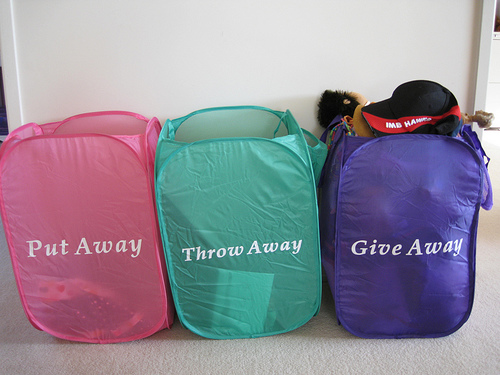
Sound familiar? If it was up to Cooper when we need to clear clutter in the home, he’d hire a mini skip and it would all be gone, which potentially wouldn’t be such a bad thing. However, I’m not as willing to give away things we may need in the future, or those things that have sentimental value.
Eventually there comes a time when that corner, box, room or rooms need to be cleaned out though. Where do you start, especially when you’re busy and have family and/or pets running around and visitors looming?
Inspired by Catherine’s situation, but also thinking on this because I have numerous clean up tasks already pencilled in for the holidays (when there aren’t the same work pressures as at other times of the year), I went in search of de-cluttering advice. I’ve just come across this terrific little site I wanted to share, clutterrescue.com.au, which appears to be an invaluable resource for when you do indeed need to clear clutter in the home. Here’s just one of their helpful videos:
What’s your best tip for clearing clutter in the home? Share it with us on FACEBOOK or TWITTER.
Need some extra help? Clutter Rescue has its own YouTube channel you can subscribe to, and even runs Organising Bootcamps for those serious about clearing mess in all aspects of their lives.
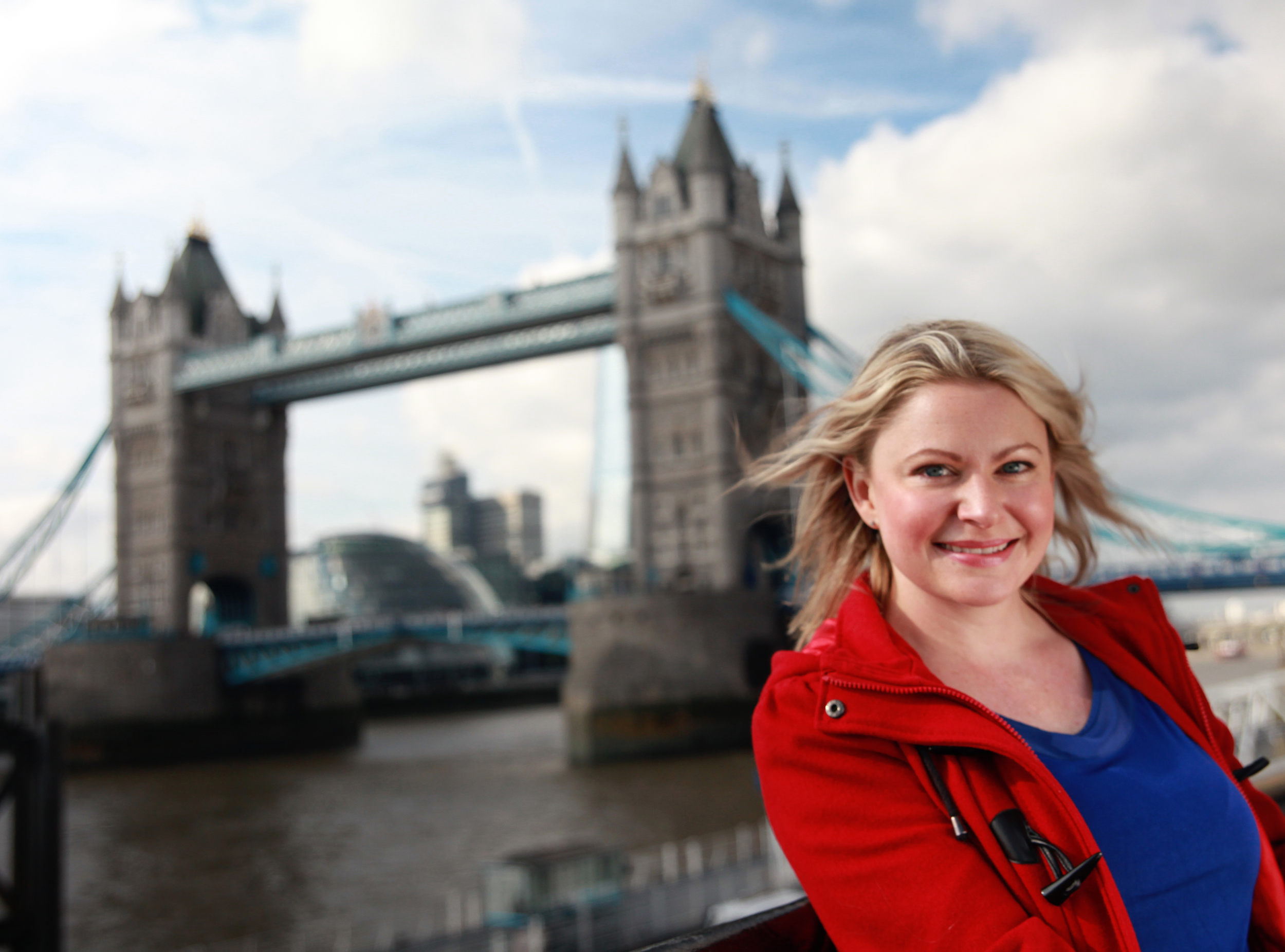
by Sarah Blinco | Nov 3, 2013 | Creative travel experiences, Travel blogger destinations, United Kingdom
Behind the scenes on location with The Photo Boutique, London
As you’ll know if you’ve been following this blog or my social media, I was in the UK recently for a little work mixed with play. Every now and then I need to have some professional photos done for work, because no, my selfies do not resemble those of Miranda Kerr or Rihanna – I need professional help!
The time had come, but I thought to myself in Australia, why not do it in London?! I knew the calibre of photography would be great, but I also figured it might be a nice travel/London memento. And if you’re travelling – solo, as a couple or family – what better way to remember a precious travel experience than to have awesome photos captured? It’s also a fun way to spend a half or full day, and you see the sights all at the same time. A winning idea!
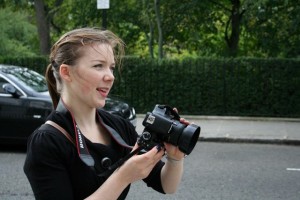
On my hunt for London photographers, I searched for someone who mentioned that they would do shoots on location, as I didn’t just want a studio shoot (that can be done anywhere). I wanted someone who would capture me in my favourite city. I came across Cara Bendon of The Photo Boutique (pictured above), and long story short, she’s amazing!
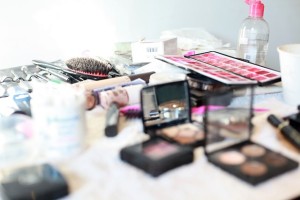
Cara and make-up artist, Catherine Bailey, turned up at the time we’d booked, made me look like I hadn’t been travelling with a flu for the past two weeks, and then we spent the next few hours on the photos. The experience was fun, and I met two lovely, professional people who could very easily be my friends; we got to explore London’s streets and landmarks, and now I’ve got the shots I need for business, but more importantly, some really nice images that link me to my ‘other home’.
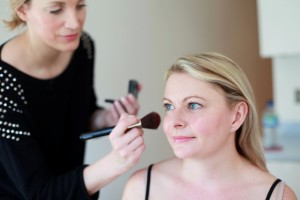
Tips
If you’re going to book something like this, go with your gut when you come across websites and reviews. If you can, ask around for feedback or testimonials. Ladies, if you’re to do this on your own as I did, general advice I’ve been given is to steer clear of male photographers.
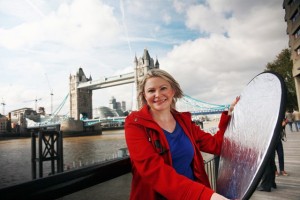
No disrespect, but I’ve been told some horror stories, so unless you know them, I’d advise going with an all-female team (although Cara had me working, see above … kidding! ;-)). Make sure you meet in a place where you’re comfortable and have space to have make-up done and where you can change into a couple of different sets of clothes.
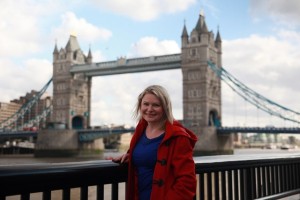
A photo-shoot on your travels; now there’s a unique experience that maybe you’d like to try too.
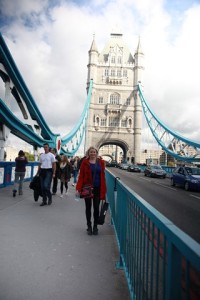
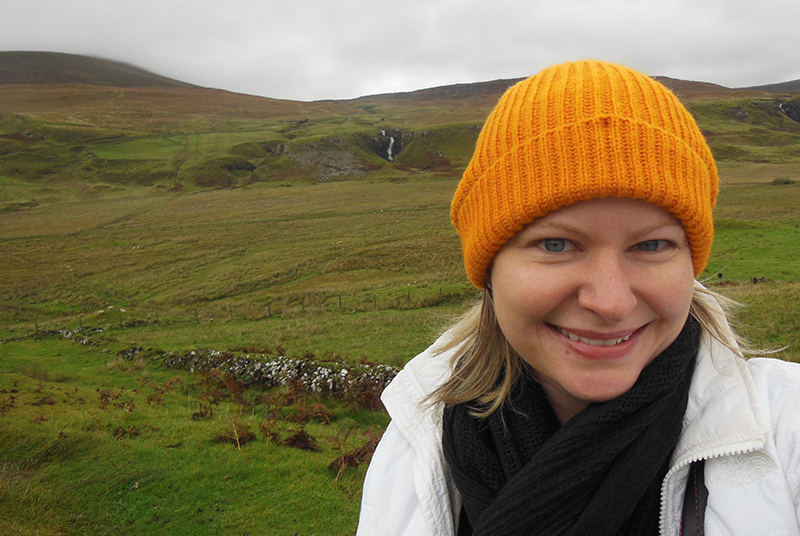
by Sarah Blinco | Oct 24, 2013 | Travel blogger destinations, Travel vlog, United Kingdom
What a wonderful adventure it is fro Edinburgh to Isle of Skye in Scotland.
Here’s a two-minute snapshot of life in the Scottish Highlands for a bunch of travellers on board Haggis Tours….
Edinburgh to Isle of Skye
“Do you trust your Uncle Chris?” Our amusing guide’s dulcet tones broke the silence, rousing us all from a coach-induced delirium. “Yes,” we smiled and nodded, wondering what was coming next.
“Right then, close your eyes. Close them tight, and don’t open them until I say. I’m going to tell you a story…”
A mild objection rose from the group, because at that point we were cruising throughout 360-degrees of picturesque landscapes: vast lochs, dense green terrain stretching skywards, mysterious clouds looming across the cliff-tops, the stuff of films and television − how could we look away?
“When I was little,” he continued, “My Uncle Harry brought us along this route on a family outing; he requested the same of us, and as we trusted him, we kept our eyes closed… I see you all trust me, well, except for you two in the front seat. Don’t think I can’t see you.” We giggled but kept our eyes shut (well I did anyway), as Chris proceeded with one of his wonderful tales of adventure and revelry.
Just as I was pondering how much of Mother Nature’s spectacular show I was actually missing despite being thoroughly immersed in Chris’ story, his tone notably edged towards a climax, as the coach simultaneously stopped. “And then my Uncle told us to turn our heads to the right, and open our eyes NOW.”
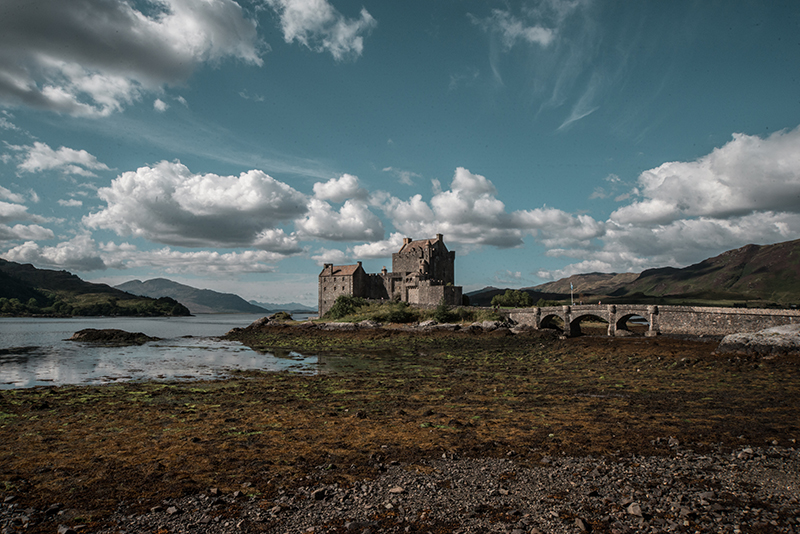
As forty odd heads shifted to the right, and our eyes snapped open in anticipation, we all gasped at the surreal scene, for in front of us, perched in the middle of a large loch, surrounded by peaceful lapping water, a crisp breeze and dreamy mountainous landscape, was the most gorgeous Mediaeval castle most of us had ever seen − in real life, at least. It was a scene we had envisaged when choosing this Haggis Tours Skye High expedition, and there it was for the taking.
Eilean Donan Castle, originally built in the 13th Century, but lovingly restored over the years, familiar to a few as it has been featured in various films and photo-shoots.
This wasn’t the last castle or set of romantic ruins we would come into contact with on our journey further into the Highlands of Scotland, and even though the landscape varied from lochs and mountains, to desolate, craggy regions featuring jaw-dropping sheer cliffs dipping into the icy ocean, it was all magical − everything I’d hoped.
The Isle of Skye itself is all dramatic landscapes surrounded by sea and boasts Scotland’s oldest and youngest mountains. A geologist’s dream, with something different to discover on each and every journey.
Faeries, folklore and Skye high adventure
I was more interested in the folklore of the place − and yes, stories of faeries, princesses, monsters, romance, battles and betrayal run rampant in these parts.
Fortunately for us, Chris is the very best, most passionate story-teller I’ve ever met, and his enthusiastic accounts − of history and mythology − had us enthralled for hours. His accent didn’t hurt either (notably the Scottish accent usually ranks within the top three sexiest in the world… according to Google (and a little of my own research)).
As we edged up a steep hill, ocean and windswept cliffs drew further behind us and fields of green with odd-shaped mounds emerged in front (as pictured above). Chris explained we were about to discover a sublime little place called Faerie Glen. As I happy-danced gleefully in my mind (anywhere called ‘Faerie Glen’ had to be amazing, right?), he recounted a ‘faerie-tale’ about a young prince of this world, and a faerie princess who fell in love many moons ago.
Of course, they could never be together, but the faerie king granted them a wedding plus one year and a day together. Sadly, that year passed all too quickly, and as they parted ways, broken-hearted, the faerie princess handed her true love a special faerie flag blessed with protective powers. This flag is said to have been used by Scots in the past, and indeed it has protected them.
Allegedly, some Scottish soldiers even took the flag with them into the Great War and were the only men in their group to return. While we didn’t actually get to see this charmed flag, we were privy to the home of the faeries.
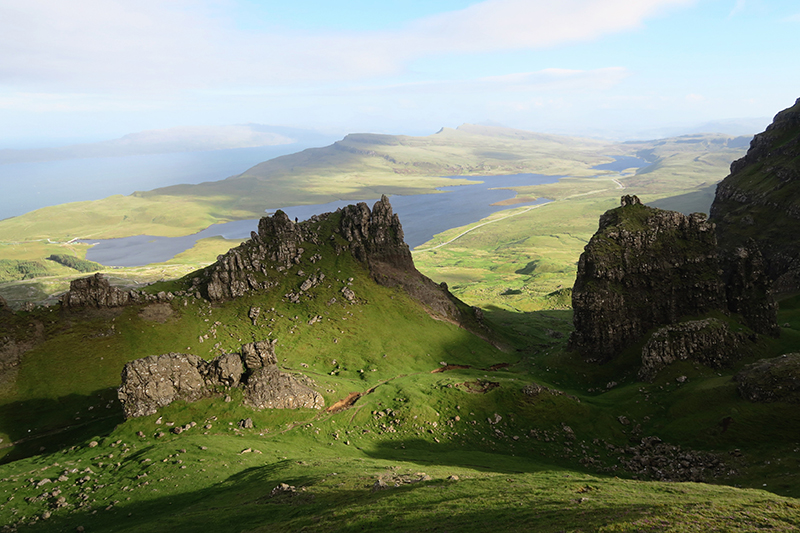
Faerie Glen is a marvellous green, hilly landscape with hidden surprises − like waterfalls pouring from cliff-tops − emerging around any given corner! It’s said, if you need help with anything important here in the human realm, if you close your eyes and walk around one of these ‘faerie mounds’ seven times, a portal of light will open up in the heather and take you into the faerie underworld.
But, beware, for time passes quickly in Faerie Glen’s underworld, so if ever you are to meet a faerie here, or seek help below, your notion of fifteen minutes could indeed be seventy years ‘up here’.
This trip was more than just sensational scenery (which would have been enough); we also learned about Scotland − history, conflicts, tumultuous relationships with neighbouring England as well as between clans.
In fact, if you’re a Campbell you’re not welcome in some of these parts to this day! We of course gained knowledge of other intriguing lore… and a little background in something very important to the Scots, whisky. There are indeed many wondrous, historical and interesting elements which come together to colour contemporary Scotland.
Evidently Scotland is home to numerous renowned features, but none more famous than Loch Ness and its notorious monster. This particular destination has been on my bucket-list since childhood. My brother, Josh, and I were both fascinated by this legend when we were young, and he managed to visit ten or more years before I made it to Loch Ness.
I’d always treasured a little Nessie figurine which Josh had bought for me, and was particularly excited to finally dip my toes into the choppy waves of this spectacular body of water.
Loch Ness is massive. It contains more than twice the water England has within all of its lakes and catchments. It’s also dark under the waves, in fact, it’s pitch black at 10 metres below.
Unexplored lava caves and tubes lead off the loch, and sonar navigation systems have detected unnaturally large shapes swimming in the depths. Basically, there is a lot of space and much scope for a monster − or monsters − to hide.
Many do believe in these monsters, and if we can appreciate anything from history, it would be that while someone may seem mad for their beliefs, it does not mean they are incorrect. Did you know that scientists understand more about the surface of the moon than about the depths of these waters? Which is why believers insist yes, the monster is possible.
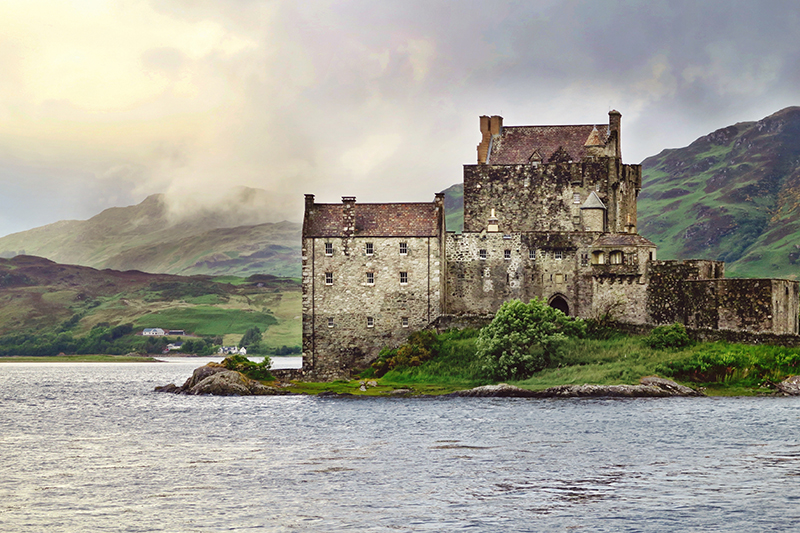
While the earliest report of a monster sighting associated with this area dates back to the 7th Century, modern documented sightings started in the 1930s, with the most famous picture, known as ‘the Surgeon’s Photograph’, snapped in 1934. A hysteria built around the story which continued into the 1950s, and while that has calmed, even to this day there is a policeman in Inverness (a city not too far up the road) who is tasked with the job of recording sightings.
Nobody knows whether Nessie is real or not, and that’s part of the mystique and allure of this story. There are things in Loch Ness; there are dangerous things − this is a fact. But it is the monster that makes it legendary.
From the captivating cliffs of Cuith Raing, sheer drops and waterfalls crashing into the ocean around Kilt Rock, to magical bodies of agua promising eternal youth, and the character of one of the world’s most delightful cities, Edinburgh: this Scotland and Isle of Skye journey is certainly one that leaves a happy traveller wanting more.
I discovered a blog by ‘Rachel in London’ who experienced this trip in 2009, and I feel she captures my feelings with these words. “Jane Austen’s book Northanger Abbey sums up perfectly my whirlwind of a weekend touring Scotland and the Isle of Skye:
‘If adventures will not befall a young lady in her own village, she must seek them abroad’.”
Go seek your adventure, and if I can impart any advice, seek it in Scotland.
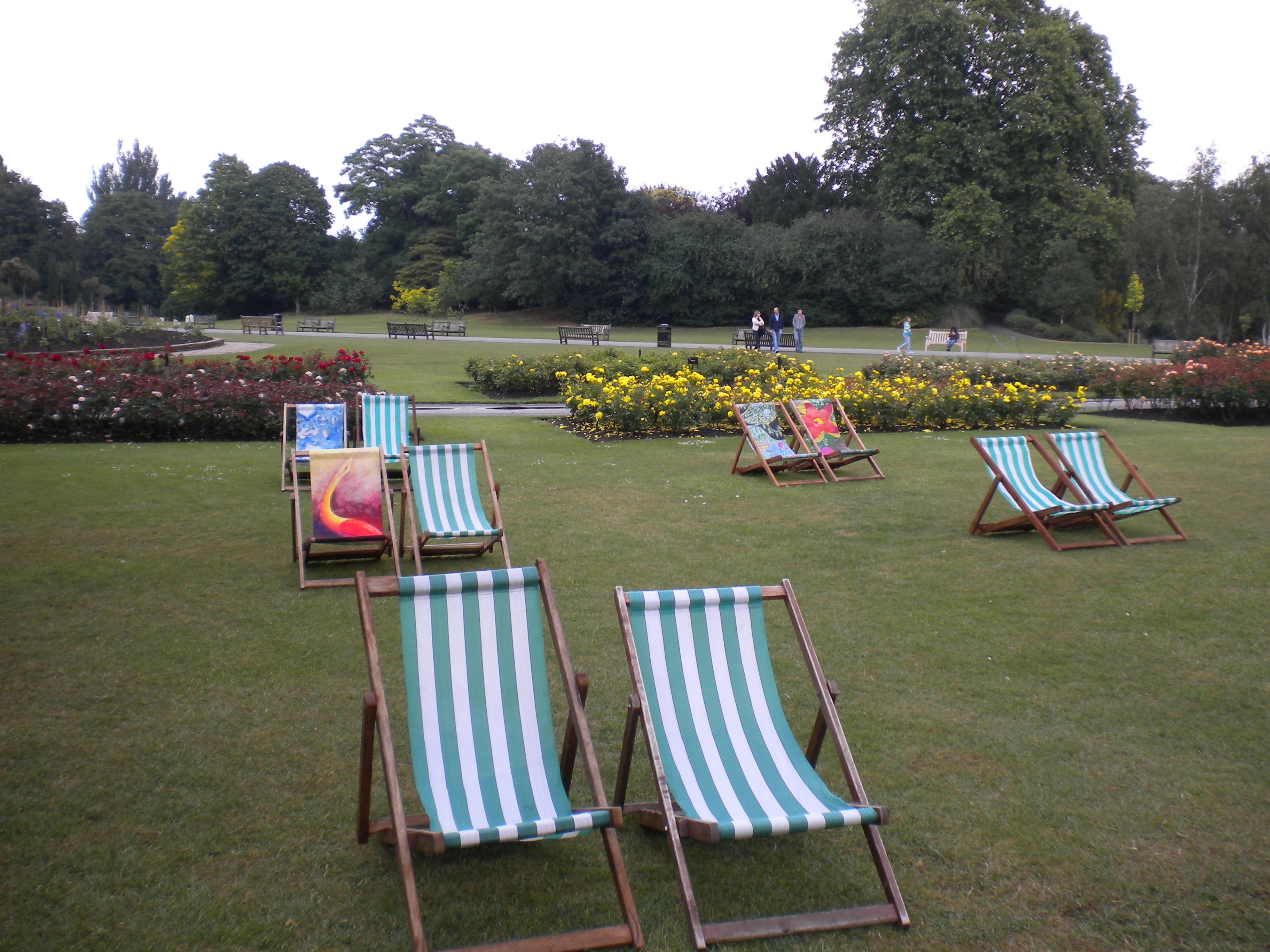
by Sarah Blinco | Oct 21, 2013 | Expats explore London, Travel blogger destinations, United Kingdom
London is a wonderful world city; most can appreciate this. What’s fascinated me about the place in recent years however, is the technology and progressive engineering that is emerging. ‘Tech City’, within London’s east-end, is the region’s equivalent to Silicon Valley, and home to many of the globe’s great technology companies. Additionally, innovative new structures are erected every year, each designed to better manage pollution and all the issues we generate as avid consumers of…. everything!
Co.Exist by international business brand, Fast Company, produced analysis on statistics in late 2012 which found London to be among the world’s top six greenest cities, alongside New York, and unsurprisingly, Vancouver, Copenhagen, Amsterdam and Stockholm.
The city held firm at number five on Fast Company’s 2012 Top 10 Smart Cities on the Planet, for intelligent use of technology and resources; “Resulting in cost and energy savings, improved service delivery and quality of life, and reduced environmental footprint”. Environmental responsibility is determined by factors such as car ownership, green space, bicycle usage, solar installations, recycling and water consumption − all taken seriously by contemporary Londoners.
Loving sustainable London
The city is simple to explore on foot, so with a day to spare I decided to emerge from the Underground and take a look at what makes this place ‘green’, and what’s driving sustainability into the future. Helping me to discover whether we can indeed learn something from operations here was Stephanie from Insider London, an organisation which has recently added another interesting walking excursion − the Cutting Edge Green Tour − to its already comprehensive, personalised guided services that showcase London from street-level.
Following the green success of the 2012 Olympic Games, numerous projects were set into play thanks to newly introduced government funding, to encourage a lasting sustainability legacy, with an aim to better balance our human needs against those of nature. Green spaces within the city’s newer precincts are a must, and my first port of call with Stephanie − Central St. Giles‘ bustling office area − provided an ideal example. This interestingly-designed space features an excellent BREEAM (Building Research Establishment Environmental Assessment Method) rating, as 80 per cent of heat in the development is generated from renewable sources (biomass), 60 per cent of rainwater falling on office roofs and into the piazza is collected and used, 100 per cent of cooling tower water discharged is collected for re-use, 90 per cent of demolition materials were sent for recycling, and green roofs and roof gardens attenuate rainfall and heat build-up. Stephanie did point out that there needs to be a balance when it comes to roof gardens − if too much water or maintenance is required it defeats the notion of sustainability, but by the same token, greenery is being added to all major cities now as it defends against smog.
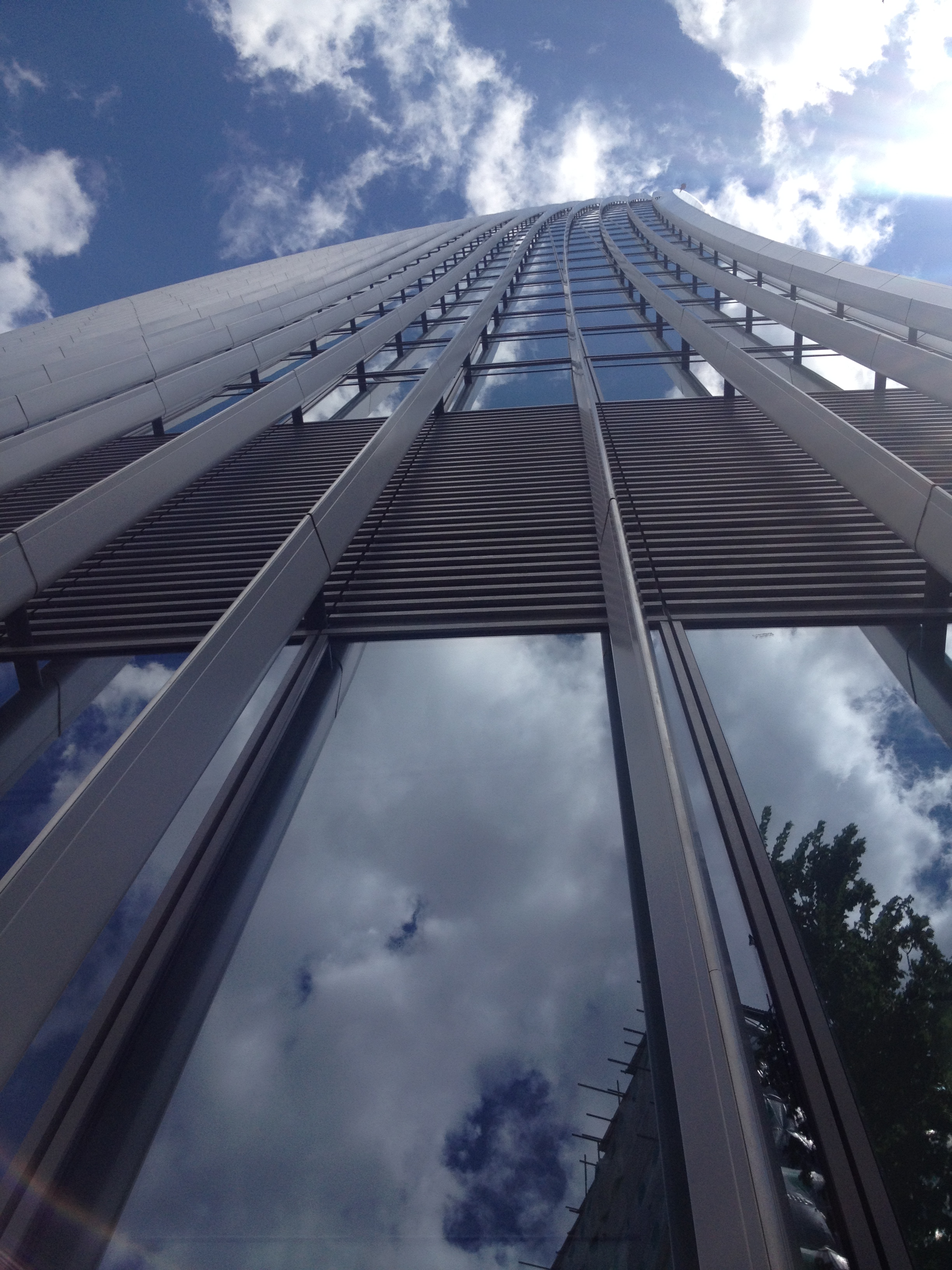
We explored the London Transport Museum in Covent Garden, which was one of the first buildings in the city to be green retrofitted utilising recycled and regenerated original materials. It features concealed solar panelling too, and an ingenious ventilation system − creating what’s described as ‘the Monroe effect’ − designed to conserve energy usually required to temperature-control museum spaces. The ‘Monroe’ terminology indeed alludes to the famous picture of Marilyn caught crossing an air vent, as this describes how the cutting-edge cooling and heating system provides an even temperature, thus preserving the oldest exhibits, including three horse-drawn vehicles from the mid-19th century.
From a spectacular stand-point on Waterloo Bridge, we discussed the successes and pitfalls of recent additions to the London skyline, the Leadenhall Building, nicknamed ‘Cheesegrater’, Strata Tower, also known as the ‘razor’ for its likeness to an electric razor, and London’s famous Gherkin Tower at 30 St Mary Axe. All new developments come ready-made with simple energy and water-saving benefits, including sensor lighting (turns off when not in use), LED lights, light and temperature monitoring and rain harvesting systems. While these buildings (and the majority of sky-scrapers in London) are now rated quite high on the aforementioned BREEAM scale, another of the clan, the ‘Walkie Talkie‘ building (20 Fenchurch Street), has been re-dubbed, ‘Walkie Scorchie’ because the contractor who supplied the glass has somehow got away with using material that heats up anything in its path; akin to a death ray from Star Wars! And yes, UK journalists have taken to the street to test a theory you could fry an egg within the beams of light emitted from the building, and indeed you can! Then there’s the Strata Tower where although green measures are in play, plans for a more significant level of sustainability didn’t quite pan out. There are three massive turbines at the top of the 147-metre-high building, which were supposed to generate eight per cent of the energy needs within, however, turns out they are far too loud for anyone inside the building to be able to think, and they cause vibration − like a small, incessant earthquake. The design team are to be admired for their idea though, and it’s quite sad it hasn’t worked out as planned. Could it be that other designers perfect such a scheme in the future?
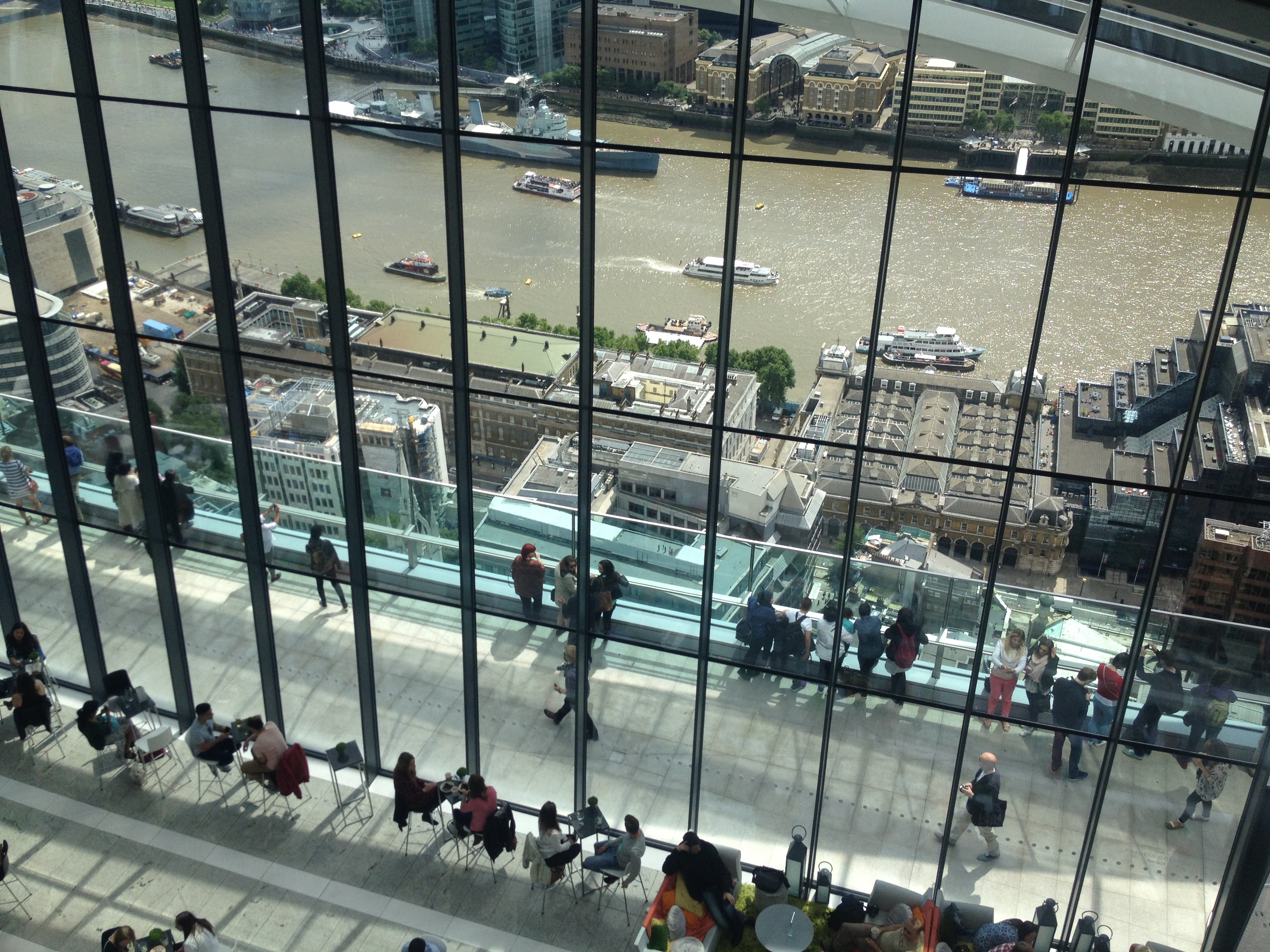
Back on street level, we discuss improvements made to the likes of the Southbank Centre, Royal National Theatre and London Eye which boast upgraded energy-saving ventilation systems and LED lighting. The new Blackfriars Bridge has been hailed “the sunniest bridge in the world” courtesy a roof made up of 4400 solar panels, which means it is apparently the largest solar bridge in the world, and the bridge produces enough clean energy to power about 50 per cent of Blackfriars transit station’s needs. Also worth a visit is the Southbank Centre Roof Garden − one of the city’s best-kept secrets − an oasis which features fruit trees, wild flowers, herbs, stunning views and a cafe and bar.
Wandering around we notice a few of London’s new fleet of electric buses ferrying commuters between central city stops. The new vehicles have three doors rather than two, which is not only more energy efficient but means additional staff score jobs as one more person is needed to man each bus (at the back end). Cycling is becoming more popular by the year here, particularly following the implementation of the ‘Boris bike’ and its hire system originally inspired by the city of Montreal in Canada, and one that has since rolled out around the world. New and improved ‘cycle highways’ are encouraging commuters to re-think costs that can be saved by cycling, not to mention the reduction of our carbon footprint and personal wellness benefits. Free, super fast electric car charging stations are now also located around the city, so you can plug in, nip into Marks & Spencer (M&S) for some groceries, and be on your way, petrol-free.
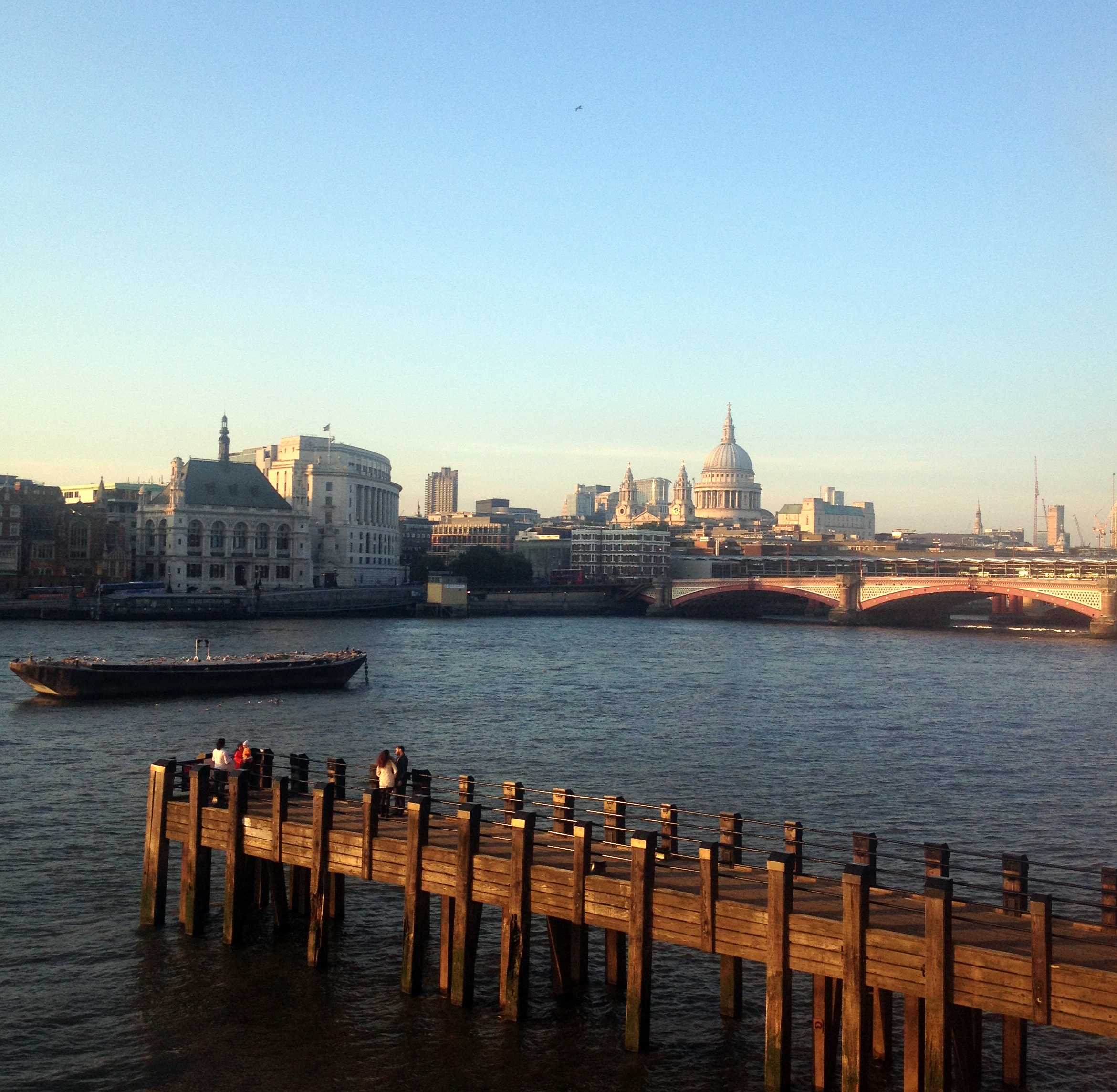
Speaking of M&S, did you know it is one of the greenest retailers in the world? Just a few of the innovations the organisation has implemented since its 2007 Plan A eco-agreement are all lights in stores are now LED, plastic shopping bags come at a cost, their operations are carbon neutral and no rubbish is sent to landfill − it’s all recycled or composted. M&S also engage local British suppliers, recycle plastic bottles into polyester which is then used in some of its clothes lines, and sell fair-trade product. Another high street example of an eco-friendly retailer is Lush, who promote a ‘naked’ policy − no packaging where possible, which saves water, energy and transport costs. There are not too many liquid products sold at Lush, and a few of the company’s innovative items include tooth tabs (an environmentally-friendly alternative to toothpaste) and ‘hard’ hand-cream and body butter which looks like soap but rubs off and melts into the skin. The colourful and quirky Neal’s Yard in Covent Garden is an interesting place too, as the precinct hosts some of the UK’s leading independent organic and natural health retailers, including the famous Neal’s Yard Remedies which was founded quite ahead of its time in 1981.
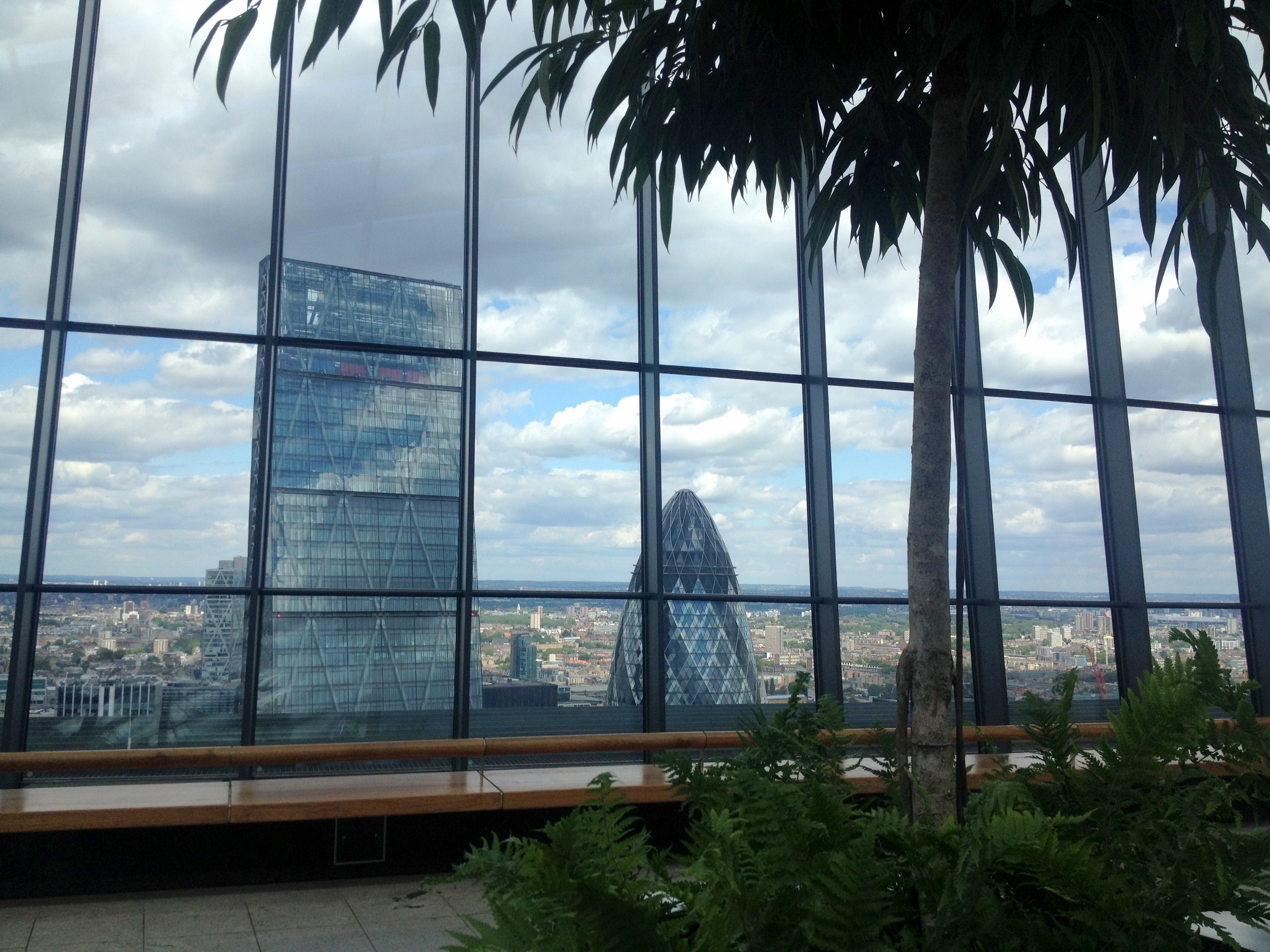
Of course, mistakes have been made here, and there’s always room for improvement. In London that is particularly highlighted when it comes to water conservation, where the city struggles due to ageing and leaking pipes. However, plans are underway to address the issue, and citizens are behind the push. London has been internationally recognised for sustainability innovations such as congestion tax and its robust transit system. Importantly, because players at the top of the game are setting an example and encouraging sustainable lifestyles − gardens, cycling, conserving energy and recycling − the people are following suit. From my perspective, on my ‘home front’, many Australians are doing their utmost to lead the charge, but there are many others falling behind because of laziness and a poor attitude to sustainability portrayed by many regional councils. One would assume it would be harder to get people to act on a larger scale, such as that of a city like London or New York, but evidently it is entirely possible. And I think that’s a great message for all of us − no matter where we live − moving into the future.
While in London I also took the wonderful, informative and fun Quirky Walking Tour with Helen from Insider London. Two enthusiastic thumbs up if you’re seeking a better way to learn about this interesting metropolis.
Want to talk travel, tech and green designs? We’d love to hear from you. Come and visit on FACEBOOK or TWITTER

 Case in point, I was lucky enough to attend Taylor Swift’s sensational show at Suncorp Stadium in Brisbane on Saturday night, with 40,000 other revellers. She was just gorgeous, and the production excellent. I understand why this young artist is selling out stadiums around the world. If you can look up to someone who is younger than you, then I definitely look up to her. She’s nice, confident without being arrogant, and she writes beautiful music. It was also lovely to see that talent which is non-offensive, naked and twerking its way around the world is appreciated on a great scale by an audience of all ages. For a moment in the show, there was a bit of a malfunction, which did impact on a few attendees at the front. The majority of the massive crowd had no idea, and as the crew fixed up what turned out to be a damaged elevated stage, Taylor came out and amused the crowd for a few moments. Anyone severely put out evidently had their money refunded. In any case, these things happen, and it was rectified swiftly (pun intended) and efficiently. However, next evening on the news, channel 9 in Australia didn’t report on the wonderful show, or the excited crowd, or the brilliant performer behind it all – instead they produced a full segment on the “dramatic chaos” that unfolded, and even went to the bother of tracking down one of the very few audience members who needed to be moved. Why would they choose for this to be the focus of the story when in reality, thousands of people gained so much enjoyment from the evening? A song Taylor sang during the Red concert was Mean from her last album, and I have to say, I reckon it’s applicable to this news piece. The reason I’m blogging about it is because I noticed other attendees saw this TV news piece and commented on social media, agreeing with my own sentiments recorded here.
Case in point, I was lucky enough to attend Taylor Swift’s sensational show at Suncorp Stadium in Brisbane on Saturday night, with 40,000 other revellers. She was just gorgeous, and the production excellent. I understand why this young artist is selling out stadiums around the world. If you can look up to someone who is younger than you, then I definitely look up to her. She’s nice, confident without being arrogant, and she writes beautiful music. It was also lovely to see that talent which is non-offensive, naked and twerking its way around the world is appreciated on a great scale by an audience of all ages. For a moment in the show, there was a bit of a malfunction, which did impact on a few attendees at the front. The majority of the massive crowd had no idea, and as the crew fixed up what turned out to be a damaged elevated stage, Taylor came out and amused the crowd for a few moments. Anyone severely put out evidently had their money refunded. In any case, these things happen, and it was rectified swiftly (pun intended) and efficiently. However, next evening on the news, channel 9 in Australia didn’t report on the wonderful show, or the excited crowd, or the brilliant performer behind it all – instead they produced a full segment on the “dramatic chaos” that unfolded, and even went to the bother of tracking down one of the very few audience members who needed to be moved. Why would they choose for this to be the focus of the story when in reality, thousands of people gained so much enjoyment from the evening? A song Taylor sang during the Red concert was Mean from her last album, and I have to say, I reckon it’s applicable to this news piece. The reason I’m blogging about it is because I noticed other attendees saw this TV news piece and commented on social media, agreeing with my own sentiments recorded here.

















